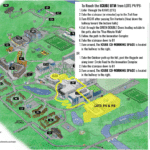
Co-creation for a B2B startup
May 17, 2024
Supporting startups at the University of Toronto
September 9, 2024
Co-creation for a B2B startup
May 17, 2024
Supporting startups at the University of Toronto
September 9, 2024Rapid User Testing: Online Surveys for Quick Feedback

Rapid user testing has become a cornerstone of agile product development. By incorporating quick, iterative feedback loops, companies can ensure their products are aligned with user needs and preferences. Online surveys, a powerful tool in this methodology, offer a convenient and efficient way to gather user feedback. Let's explore the benefits, design strategies, and best practices for using online surveys in rapid user testing.
Benefits of Rapid User Testing with Online Surveys
Speed and Efficiency
One of the most significant advantages of using online surveys for rapid user testing is the speed at which customer feedback can be collected and analyzed. Unlike traditional methods that require significant time and resources, online surveys can be deployed quickly, allowing for real-time data collection. A study published in Science Direct found that the average response rate for online surveys is 44.1%. Additionally, targeting a well-defined and specific population significantly improves the response rate for online surveys. This rapid turnaround is invaluable for teams working in fast-paced development cycles.
Cost-Effectiveness
Online surveys are not only quick but also cost-effective. Traditional user testing methods, such as in-person focus groups or interviews, often involve substantial costs, including venue rental, participant compensation, and facilitator fees. In contrast, online surveys reduce these expenses significantly.
Accessibility and Reach
The accessibility of online surveys extends their reach far beyond what is possible with in-person methods. Surveys can be distributed to a global audience, enabling feedback from diverse demographics. This inclusivity ensures that the data collected is representative of a broader user base. Additionally, online surveys can be accessed at any time, providing flexibility for respondents and increasing response rates.
Iteration and Improvement
Rapid user testing thrives on iteration. Online surveys support this by enabling quick feedback loops that facilitate continuous improvement. Agile teams can deploy a survey, gather feedback, and implement changes in a matter of days. This iterative process is crucial for refining products and ensuring they meet user expectations.
Designing Effective Online Surveys
Defining Objectives
Clear objectives are the foundation of an effective survey. Before crafting questions, it's essential to identify the specific goals and outcomes you aim to achieve. Whether you're looking to validate a new feature, understand user pain points, or gauge overall satisfaction, having well-defined objectives ensures that your survey is focused and relevant.
Target Audience Identification
Knowing your audience is crucial for obtaining meaningful insights. Identify the user demographics that are most relevant to your survey's objectives. Segmenting your audience allows for more targeted questions and richer data. For instance, if you're testing a new app feature for those searching for affordable online counseling programs, you might segment users based on their familiarity with the app, frequency of use, or specific use cases.
Questionnaire Design
The design of your questionnaire can make or break the success of your survey. According to The Set-up Stage of a Survey, it is crucial for the researcher designing the questionnaire to conduct background research on the topic under consideration. Craft questions that are clear, concise, and unbiased. Utilize a mix of question types, including multiple-choice, open-ended, and Likert scale questions, to capture a range of insights.
Survey Length and Structure
While it's important to gather comprehensive feedback, it's equally important to respect your respondents' time. Long surveys can lead to respondent fatigue, resulting in lower completion rates and less reliable data. Aim for a survey length that balances thoroughness with brevity, ideally taking no more than 10-15 minutes to complete. Structure your survey logically, grouping similar questions together to maintain a natural flow.
Best Practices for Conducting Rapid User Testing
Pre-Survey Preparation
Preparation is key to a successful survey. Conduct a pilot test with a small group to identify potential issues with question clarity, survey logic, and technical functionality. Use the feedback from the pilot test to make necessary adjustments before launching the survey to a broader audience.
Launching the Survey
Timing and distribution channels play a significant role in the success of your survey. Choose a time when your target audience is most likely to be available and willing to participate. Distribute your survey through multiple channels, such as email, social media, and in-app notifications, to maximize reach. Personalizing your survey invitations can also increase response rates, as personalized messages are more likely to capture attention.
Data Collection and Analysis
Once your survey is live, monitor responses in real-time to ensure a steady flow of data. Data-driven decision-making relies on collecting and analyzing relevant data to guide strategic choices. Employ statistical methods to analyze the feedback, looking for patterns and trends that can inform your product development decisions. Tools like Excel, SPSS, and built-in analytics features of survey platforms can help you make sense of the data.
Acting on Feedback
Collecting feedback is only the first step; acting on it is what drives improvement. Prioritize actionable insights and implement changes based on user feedback. Communicate these changes to your users, demonstrating that their input is valued and making them more likely to participate in future surveys. Measure the impact of the changes through subsequent rounds of testing to ensure continuous improvement.
Final thoughts
Rapid user testing with online surveys is a powerful approach to product development, offering speed, cost-effectiveness, and broad reach. By designing effective surveys, utilizing the right tools, and following best practices, companies can gather valuable user feedback that drives continuous improvement. As technology evolves, the future of rapid user testing looks promising, with advancements in survey tools and methodologies poised to enhance the process even further.